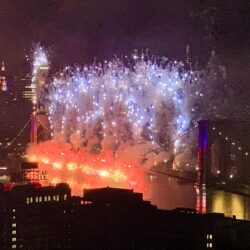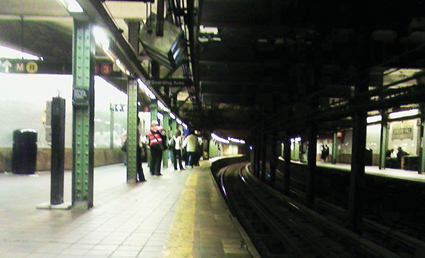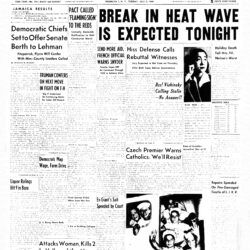
‘Fastrack’ for Repairs, Slow Trip for Riders?

Brooklyn Riders Affected By New MTA Program
By Raanan Geberer
Brooklyn Daily Eagle
BROOKLYN — For the next three nights, just as it happened last night, service on the 4, 5 and 6 lines — all of which run along the Lexington Avenue trunk line in Manhattan – will be stopped between Grand Central in Manhattan and Atlantic Avenue in Brooklyn.
While this does not leave any individual Brooklyn stations out in the cold, it could disrupt trips for Brooklyn residents who wish to get to Grand Central or to destinations in the East 20s, East 30s or the East Village. It could create equal problems for Brooklynites coming home from these locations late at night.
All in all, the MTA admits that the measure could add 20 minutes to commuters’ trips during the affected hours.
Still, says MTA spokesman Kevin Ortiz, this heavily traveled stretch of the Lexington Avenue line was chosen as the “first stop” in the transit agency’s Fastrack overnight closure program because in most places, it is close to, or shares stations with, other lines.
For example, those wishing to get to Court Street-Borough Hall can also take the 2, 3, R or N lines, or else take the A, C or F trains to the Jay Street-MetroTech station a few blocks away. Brooklynites wishing to get to the Fulton Street transit hub in Manhattan don’t have to take the 4 and 5 — they can also take the A, C, 2, 3, M or J/Z lines.
The program, which is now in its pilot phase, shuts down sections of well-traveled lines between 10 p.m. and 5 a.m. so workers can inspect tracks, repair or replace track components, repair and wash tiles, and inspect and repair signals and power lines. Crews will also clean and scrape dried mud from the roadbed, which will help ensure that signals work properly.
In the past, says Ortiz, MTA New York City Transit would typically shut down one track at a time on a subway line. Even if the power to that track were turned off, workers would still have to constantly stop work for safety reasons whenever trains approached on another, nearby track.
With Fastrack, he emphasized, the MTA can accomplish in a few days what would have taken weeks in the past.
While entire sections of a subway line have been shut down before — such as the well-publicized “Culver Viaduct” in Carroll Gardens and Park Slope — such shutdowns are usually used for construction projects, says Ortiz. This is the first time they will be used for maintenance.
During the nighttime shutdown, 4 and 5 trains originating in the Bronx will terminate at Grand Central. The routes will not run in Brooklyn at all during the affected hours, says Ortiz; the 2 train (Flatbush Avenue) shares the route of the 5 in Brooklyn, while the 3 train (New Lots Avenue) shares the route of the 4.
As for the local 6 train, it terminates at Brooklyn Bridge in Manhattan and never goes to Brooklyn.
Gene Russianoff, attorney for the Straphangers Campaign, a subway and bus riders’ advocacy group, commented, “I think the plan deserves consideration as a pilot. It’s efficiency and budget vs. customer comfort — we’ll have to see.”
Interestingly, the segment that is being shut down at night was part of the city’s first subway line, constructed by the long-defunct Interborough Rapid Transit Company (IRT — a name that still survives in the form of MTA New York City Transit’s “IRT Division”).
The stations in Manhattan from Grand Central to Bowling Green opened in 1904, while the Borough Hall station opened in 1908 after a subway tunnel under the East River was completed.
If the project is successful, the MTA plans “Fastracks” for other subway lines as well. The next one scheduled, between 34th Street and Atlantic Avenue on the Seventh Avenue trunk line (1, 2 and 3 trains), is set for mid-February.
Leave a Comment
Leave a Comment




